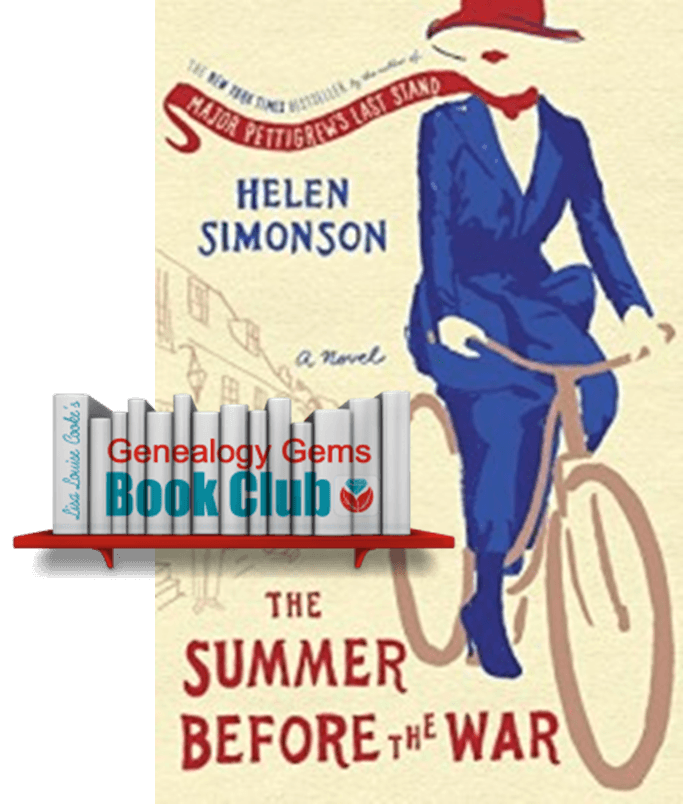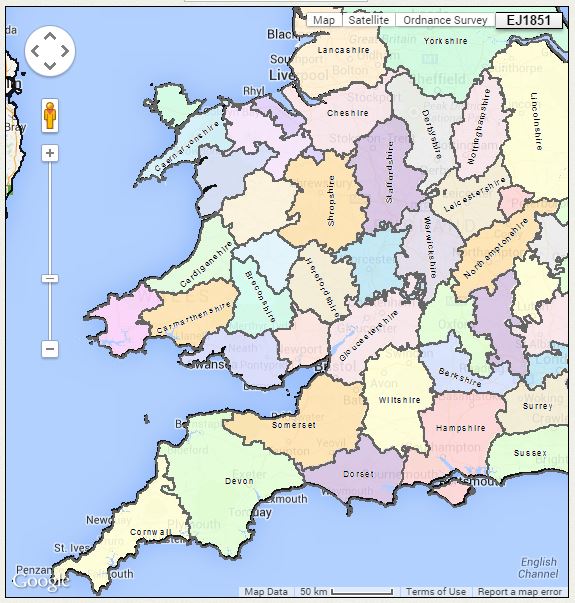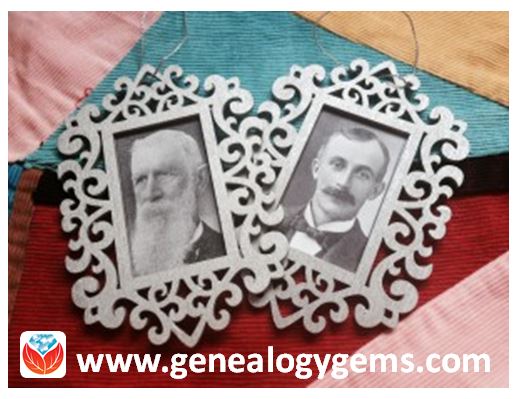by Lisa Cooke | May 25, 2015 | 01 What's New, Ancestry, Disaster Prevention, DNA, images, Trees
 Reuters recently reported that Ancestry
Reuters recently reported that Ancestry “is exploring a sale that could value it at between $2.5 billion and $3 billion, including debt.” According to unnamed sources, Permira (a buyout firm that owns most of Ancestry) “has hired investment banks to run an auction for the company.”
“is exploring a sale that could value it at between $2.5 billion and $3 billion, including debt.” According to unnamed sources, Permira (a buyout firm that owns most of Ancestry) “has hired investment banks to run an auction for the company.”
It’s far too soon to say what this might mean for paying customers, users of Ancestry Library Edition and corporate and community partners. The sale of a company can mean possible changes in direction and organization. Ancestry currently boasts delivery of 15 billion genealogy records to 2.1 million subscribers, and has stated its intent to acquire additional records at an aggressive pace. In an ever changing corporate and technological environment we believe it’s important to retain ownership and responsibility of our own data.
Our best advice to those whose master family trees are on Ancestry? Download and backup your data! We’re not being alarmist. This announcement is just a good opportunity to do something we routinely recommend anyway.
First, download your current tree(s) to GEDCOM files onto your computer. Under the Trees tab, choose Create and Manage Trees. For each tree you have there, choose Manage Tree, then Export Tree.
Next, check your sources! The Ancestry help section states, “Any pictures, charts, books, views, or similar items found in the original file will not be included in the [downloaded] GEDCOM. Vital information, notes, and sources are usually retained after conversion.” Check your GEDCOM to see whether your source notes are intact. Then make sure you have copies of documents, videos, photos and other items you may have attached to your tree. You don’t want them to disappear, should there be a hiccup (or worse) in service.
Finally, if you have used AncestryDNA, download a copy of your raw DNA data. We especially recommend this step! These tests are expensive. Tests for loved ones who are now deceased can’t be re-rerun. And Ancestry has disposed of DNA samples in the past when the company has switched directions. (Again, not trying to be alarmist, just cautious.)
 If you have relied on Ancestry or any other cloud-based service to host your only or master family tree, we recommend you do your homework and consider your options. Please click here to read a blog post about keeping your master tree on your own computer at home, and which software may be best for you.
If you have relied on Ancestry or any other cloud-based service to host your only or master family tree, we recommend you do your homework and consider your options. Please click here to read a blog post about keeping your master tree on your own computer at home, and which software may be best for you.
Click here to Start Your Free Family Tree at Ancestry 
Disclosure: This article contains affiliate links and Genealogy Gems will be compensated if you make a purchase after clicking on these links (at no additional cost to you). Thank you for supporting Genealogy Gems!
by Lisa Cooke | Apr 20, 2016 | 01 What's New, Book Club
The new featured title of our genealogy book club has been announced. We’re guessing this NYT-bestselling British novelist will win your heart, if she didn’t already with her  breakout first novel.
breakout first novel.
A smart young woman who’s traveled the world finds herself suddenly in a much more provincial setting: East Sussex, England. She spends the summer distracted by petty local politics, financial frustrations and the beginnings of a possible romance. Then the Great War begins–not so far from her new home.
That’s the premise of British author Helen Simonson’s new novel, The Summer Before the War, and our newest Genealogy Gems Book Club title. Those who have been waiting for Helen’s follow-up to her stunning debut, Major Pettigrew’s Last Stand , won’t be disappointed. Her first book became a New York Times bestseller and has been translated into 21 languages. The Summer Before the War is another great read: light and charming, with a dash of romance and humor, a lovable heroine and a compelling historical setting. It’s so easy to read and love this book!
, won’t be disappointed. Her first book became a New York Times bestseller and has been translated into 21 languages. The Summer Before the War is another great read: light and charming, with a dash of romance and humor, a lovable heroine and a compelling historical setting. It’s so easy to read and love this book!
It’s the early 1900s, and main character Beatrice Nash has recently lost her father. The estate settlement lost her control over her own funds and freedom. She comes to a small English town as a Latin teacher and must mind her manners and local politics to keep her job. Beatrice meets a man and the appeal appears mutual, but he’s already engaged.
This isn’t just Beatrice’s story, though. You’ll meet an entire buy psoriasis medication online village full of charming and irascible and expatriate and unconventional and way-too-conventional and mysterious characters, including the local gentry and the local gypsies. They all have their own stories, which unfold as they begin to experience the first great shock of the 20th century close-up: World War I. First it’s the stunned refugees who take refuge in their village. Then locals begin enlisting. Eventually you’ll see the battlefront through their eyes, but not all of them may make it back to the town that to Beatrice is becoming home.
Genealogy Book Club Podcast Interview with Helen Simonson
 Despite the awful realities her characters face, Helen Simonson somehow writes a novel that is easy and enjoyable to read. I ask her how she did that–and lots of other questions–in an exclusive interview coming this June on the Genealogy Gems podcasts. You’ll hear more about the idyllic setting she chose and her personal connection to it; how she researched the historical setting; and what it’s like to be an emigrant who longed to leave home and now misses it dearly.
Despite the awful realities her characters face, Helen Simonson somehow writes a novel that is easy and enjoyable to read. I ask her how she did that–and lots of other questions–in an exclusive interview coming this June on the Genealogy Gems podcasts. You’ll hear more about the idyllic setting she chose and her personal connection to it; how she researched the historical setting; and what it’s like to be an emigrant who longed to leave home and now misses it dearly.
Get Your Copy & Support the Free Podcast Featuring Author Interviews
So snatch up a copy from our links here (which support the free podcast–thank you!) or your local library. And let us know what you love about it!
Get the Kindle ebook – The Summer Before the War: A Novel
Get the print book – The Summer Before the War: A Novel
by Diahan Southard | Oct 16, 2014 | 01 What's New, British, FamilySearch, Maps
Did you know that FamilySearch has an interactive map to help you find English parish boundaries in 1851?
Daniel Poffenberger, who works at the British desk at the Family History Library in Salt Lake City, showed me this map gem. He says this map was about 7 years in the making!

English parish boundaries: map on FamilySearch.org.
Before you click through to the map, you should know:
- Use the main Search interface to search by a specific location.
- Click on layers to indicate whether you want the map to show you boundaries to parishes, counties, civil registration districts, dioceses and more.
- Click and drag the map itself to explore it.
- Wales is also included here but the Welsh data doesn’t appear to be entirely complete (try it anyway–it might have what you need).
- The map isn’t yet permanently operational. It does go down sometimes, possibly because they’re still working on it. It doesn’t print easily. It’s suggested that if you want to print, you hit “Ctrl-Print Screen” and then paste it into Word or another program that accepts images.
Click here to see the FamilySearch England & Wales 1851 Parish map.

Want to learn more about using maps? Premium members can check out my video, “5 Ways to Enhance Your Genealogy Research with Old Maps.” Not a Premium member yet? Click here to learn more.
by Lisa Cooke | Aug 21, 2015 | 01 What's New, Records & databases
Here’s our weekly list of new genealogy records online. It’s PACKED with European military records from WWII back to the War of 1812. Do any collections below relate to your family history? Please share with your genealogy buddies or with societies that might be interested!
BRITISH POWs IN JAPAN. Over 56,000 records pertaining to the 37,583 British and Commonwealth soldiers released from Japanese captivity in 1945 are now available on Forces War Records. ‘This collection…lists the soldiers, along with the occasional civilian, who endured these conditions. Prisoners were only obliged to provide their name, rank and number so the amount of military information is limited, however the records do include the date of capture, the camp in which they were held and the date of liberation, be that through release, escape or death.”
BRITISH JEWS IN WWI. Findmypast’s new British Jewry Book of Honour 1914-1920 “contains nearly 57,000 color images and transcripts of [an original] two-volume book published in 1922 to record and honor” contributions of more than 50,000 Jews to the British and colonial forces during World War I. “It describes Jewish enlistment, casualties, military honors, Jewish units and the work of Jewish hospitals and other Jewish institutions and agencies. Importantly, it contains alphabetical lists of those killed in action, those who were awarded military honors and the nominal rolls of Jews who served, listed by service and by regiment.”
BRITISH WAR OF 1812. The British Army Casualty Index War of 1812 now at Findmypast “contains the details of over 12,000 soldiers in the British Army who died, deserted, or were imprisoned during the War of 1812 (or the Anglo American War)….Each record consists of a transcript of the original source material that will reveal the soldiers name, birth place, former occupation, rank, regiment or unit, place or action, company officer, company number, removal date and manner of removal – this may include information on how a soldier died or whether he deserted or was a prisoner of war.”
SCOTTISH CHURCH RECORDS. A new Findmypast collection, Scottish Covenanters 1679-1688 contains over 81,000 records of The Covenanters, a “Scottish Presbyterian movement that played an important part in the history of Scotland, England and Ireland, during the 17th century….The records list the individuals who signed the Covenant…[and] a transcript created using sources held by The National Archives and the National Library of Scotland…[with] the Covenanter’s name, county, a description (often their occupation or relatives) and place.”
WWII in EUROPE. The Commonwealth War Graves Commission has launched a new online database of British, Irish, and Commonwealth WWII casualties. It will now be possible for the first time “to see the original records of all 1.7 million individuals the Commission commemorates.” According to a press release, “The digitized records cover British, Irish and Commonwealth casualties from the Second World War, together with records for most other nationals commemorated at CWGC sites: this includes the records for German soldiers.”
We love seeing all these new genealogy records online every week! The trick is to get the word out about them. Will you help us by sharing this post with others?
by Lisa Cooke | Jun 13, 2015 | 01 What's New, Craft & Displays, Holidays, images, Kids, Photographs
 Looking for a quick and easy craft to do? My mom made these cute ornaments for volunteers who work in the genealogy room of the public library with her.
Looking for a quick and easy craft to do? My mom made these cute ornaments for volunteers who work in the genealogy room of the public library with her.
These little framed photos of the volunteers’ ancestors would make fantastic ornaments to hang on a holiday tree or–year-round as my mother-in-law does–on a decorative metal family tree.
All you need are copies of old ancestral photos and these basic supplies:
- inexpensive wood or paper mache cutout frames, which you can purchase at craft stores;
- tape or craft glue to adhere the picture to the back of the frame;
- silver spray paint (or any other paint suitable for the frame surface, with a brush);
- Mod-Podge or another acrylic sealer (optional) to protect and further adhere the front of the ornament;
- decorative ribbon or string to use as ties.
This would be an easy family history craft to produce in bulk, and it’s inexpensive! Consider making them for your own family history display or for family gifts. This is a great project for kids to do, as it should turn out looking nice even with young or inexperienced crafters.
 Looking for more great family history-themed craft or display ideas? Follow Lisa Louise’s board Family History Craft Projects on Pinterest or Follow Lisa Louise’s board Kids – Genealogy and Family History on Pinterest.
Looking for more great family history-themed craft or display ideas? Follow Lisa Louise’s board Family History Craft Projects on Pinterest or Follow Lisa Louise’s board Kids – Genealogy and Family History on Pinterest.
 Reuters recently reported that Ancestry
Reuters recently reported that Ancestry “is exploring a sale that could value it at between $2.5 billion and $3 billion, including debt.” According to unnamed sources, Permira (a buyout firm that owns most of Ancestry) “has hired investment banks to run an auction for the company.”
 If you have relied on Ancestry or any other cloud-based service to host your only or master family tree, we recommend you do your homework and consider your options. Please click here to read a blog post about keeping your master tree on your own computer at home, and which software may be best for you.
If you have relied on Ancestry or any other cloud-based service to host your only or master family tree, we recommend you do your homework and consider your options. Please click here to read a blog post about keeping your master tree on your own computer at home, and which software may be best for you.
 breakout first novel.
breakout first novel. Despite the awful realities her characters face, Helen Simonson somehow writes a novel that is easy and enjoyable to read. I ask her how she did that–and lots of other questions–in an exclusive interview coming this June on the Genealogy Gems podcasts. You’ll hear more about the idyllic setting she chose and her personal connection to it; how she researched the historical setting; and what it’s like to be an emigrant who longed to leave home and now misses it dearly.
Despite the awful realities her characters face, Helen Simonson somehow writes a novel that is easy and enjoyable to read. I ask her how she did that–and lots of other questions–in an exclusive interview coming this June on the Genealogy Gems podcasts. You’ll hear more about the idyllic setting she chose and her personal connection to it; how she researched the historical setting; and what it’s like to be an emigrant who longed to leave home and now misses it dearly.


